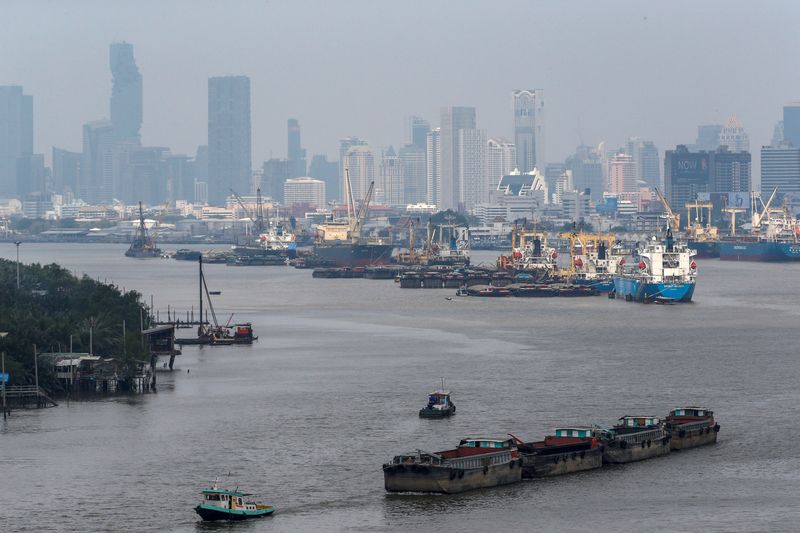By Kitiphong Thaichareon and Orathai Sriring
BANGKOK (Reuters) -Thai exports unexpectedly rose for the first time in 11 months in August amid weak global demand, and the ministry said on Tuesday that shipments should be "good" in the final quarter of the year because of year-end orders.
Customs-based exports, a key driver of Thailand's economy, rose 2.6% in August from a year earlier, compared with analysts' median forecast for a 4% decline in a Reuters poll. Exports climbed 9.7% from July.
"The growth was supported by improved signals from the global manufacturing sector compared to the previous month, although they remained below normal levels," the ministry said in a statement, adding a weak baht also helped.
The Thai currency should continue to support exports, which are expected to increase in the final quarter of 2023, Keerati Rushchano, the ministry's permanent secretary, told a briefing.
"In October to December, we should see good things coming in. It's a cycle where there will be a lot of orders," he said.
"The baht should also be helping," he said. The baht has weakened by 4.7% against the dollar so far this year.
The ministry predicts exports will be flat or down by 1% this year, Keerati said. In January-August, exports declined 4.5% year-on-year.
Chaichan Chareonsuk, chairman of the Thai National Shippers' Council, said the August exports were a "surprise" but shipments in September might fall because of last year's high comparative base of nearly $25 billion.
The group expects annual exports in September this year to be "at least flat or lower slightly," he said.
In August, exports of integrated circuits jumped 40% year-on-year while exports of cars and parts rose 24%. Rice export volumes dropped 8.3% on-year to 630,567 metric tones but export value rose 10.8% year-on-year.

Exports to the United States rose 21.7% year-on-year in August, while shipments to Southeast Asian countries fell 10.3%. Exports to Japan rose 15.7% on-year and shipments to China increased 1.9%.
In August, Thailand posted a trade surplus of $0.36 billion, compared with a forecast deficit of $1.75 billion, while imports dropped 12.8% year-on-year.